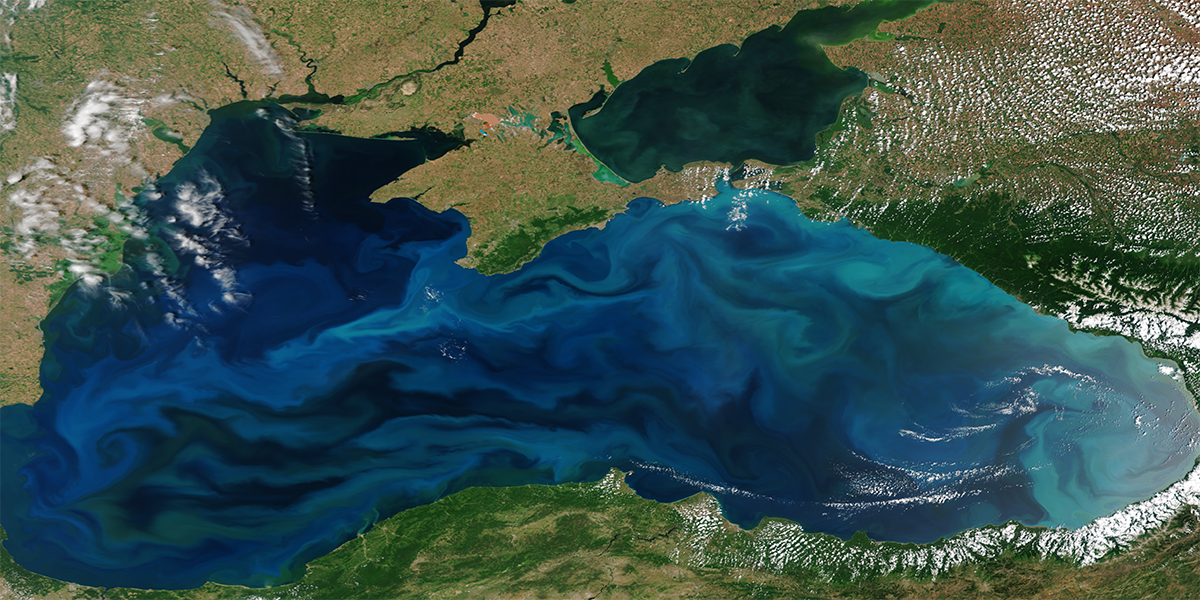Written by: Jess Van Vaerenbergh, USF CMS graduate student
From space, mosaics of color can be observed throughout the ocean. Satellite images of those colorful patterns can now be seen in the halls of CMS.
Scientists use remote sensing instruments on satellites to study ocean color, which is the hue, shade, or tone created when sunlight interacts with water and tiny suspended particles.
The color variation depends on how the materials in the water absorb and scatter light particles. When water is low in productivity, the ocean reflects various blues depending on depth. Shallow coastal waters, such as those in the Bahamas, reflect a turquoise hue, while deep waters reflect dark blue.
Highly productive particles in the water add more colors to the pallet through the way they scatter and absorb light. For example, milky blues can indicate a bloom of single-celled organisms called coccolithophores, while a mix of turquoise and brown indicates a sediment plume entering the ocean from the land. Patches of greens indicate algal or phytoplankton blooms.
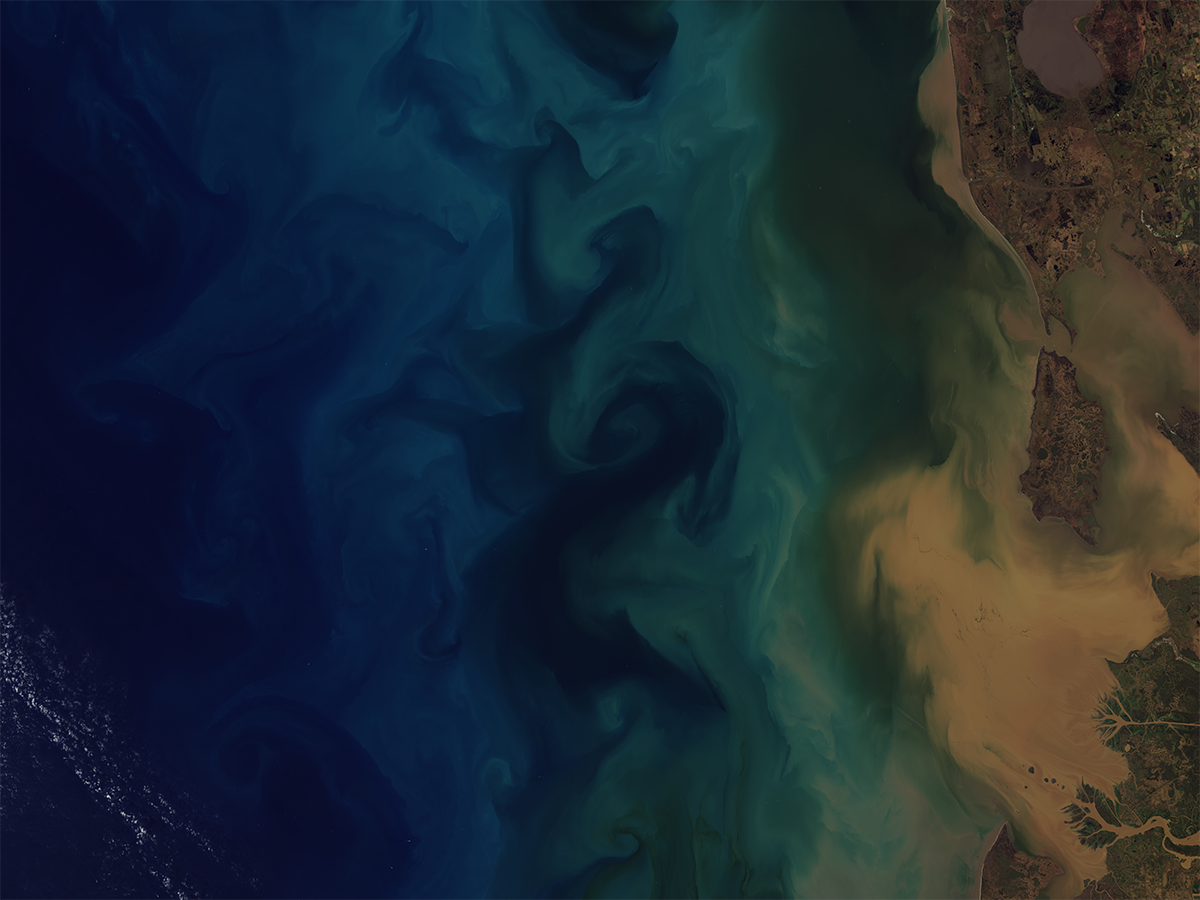
IMAGE ABOVE: Sediment and algae blooms in the Gulf of Mexico off the coast of Mississippi. Photo Credit: OLI on the Landsat-8 satellite.
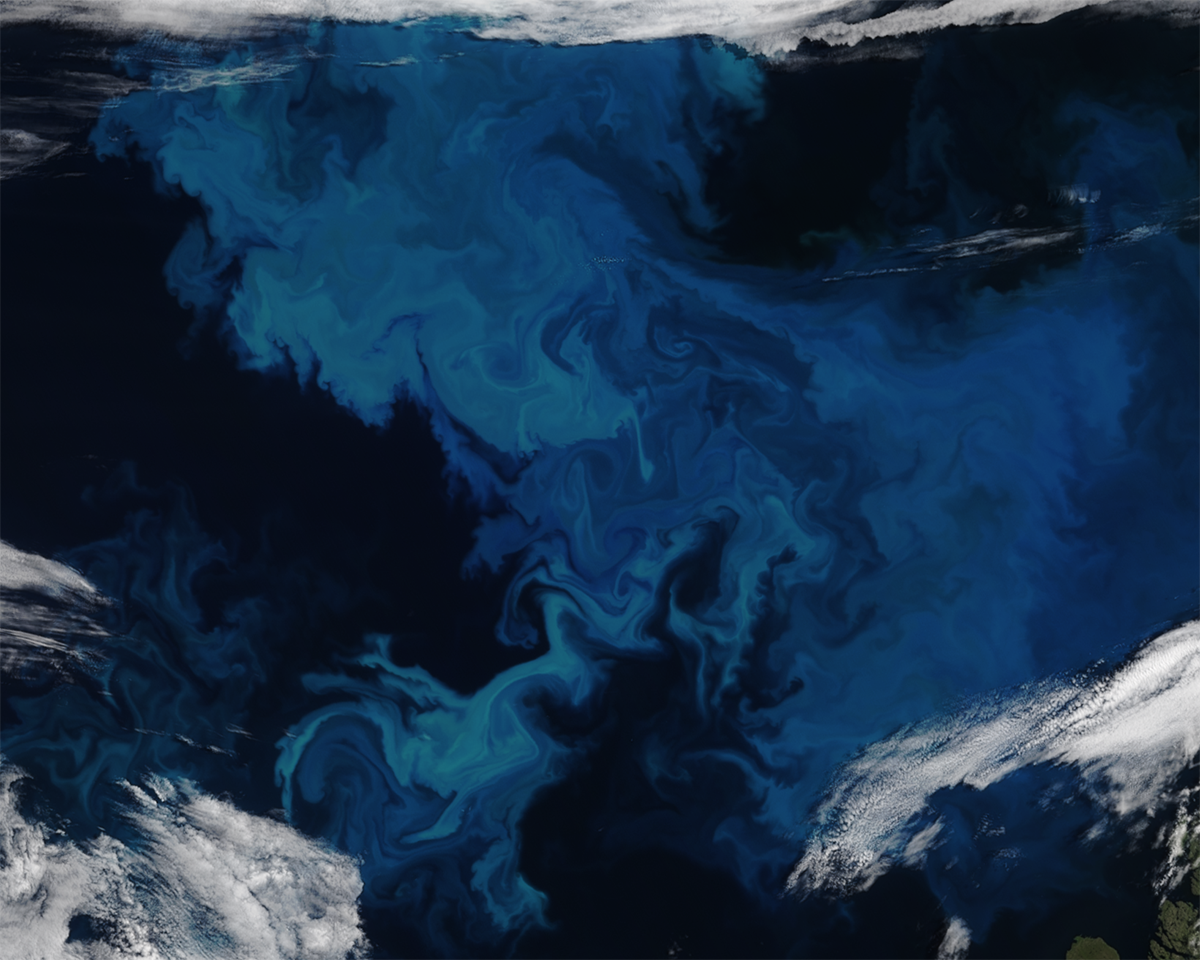
IMAGE ABOVE: The milky blue swirl indicates a coccolithophore bloom in the Barents Sea, north of Norway and Russia. These blooms persist every summer. Photo Credit: VIIRS on the NOAA-20 satellite.
Brian Barnes, assistant research professor at CMS, recognized the value of sharing these colorful satellite images and wanted to make them more accessible to a wider audience.
“As satellite oceanographers, we often look at satellite imagery as just data. We rarely take a step back and consider the beauty that can be captured by viewing Earth’s waters from space,” said Barnes.
Researchers typically review this type of data on a computer screen, which is limited compared to the scope of ocean features. Barnes’ goal was to convert the data into large art pieces that would encourage discussion and networking among the attendees.
During the 2023 Ocean Color Conference held at USF St. Petersburg, Barnes organized an evening networking event called “The Ocean on Canvas,” held at The Studio@620. Conference attendees had the opportunity to view the vibrant marine colors they discussed throughout the week.
There were 12 satellite images printed on Sintra, a high-quality PVC board. The images captured by various agencies and satellites offered different glimpses of the ocean from space.
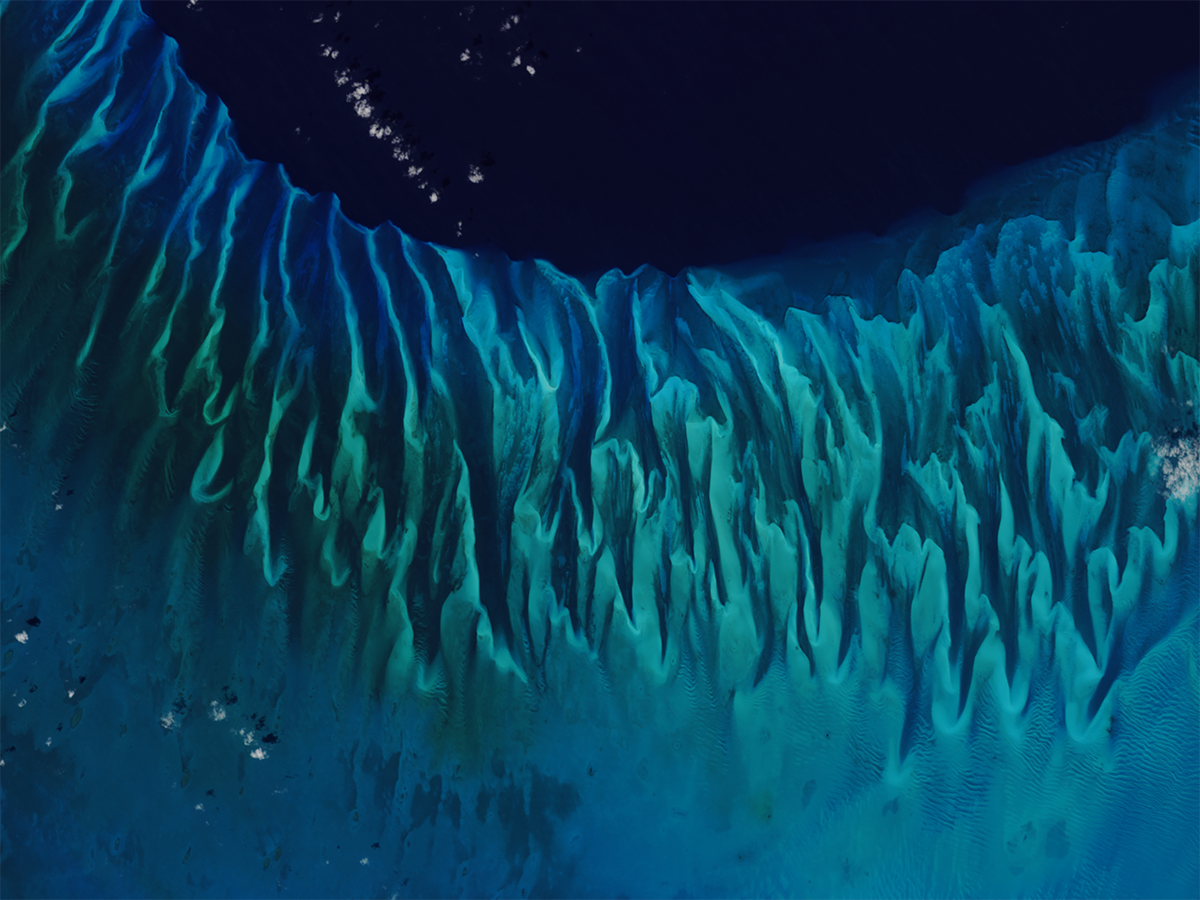
IMAGE ABOVE: Sand waves captured on the Great Bahamas Bank. The turquoise waters indicate shallow waters. Photo Credit: OLI on the Landsat-8 satellite.
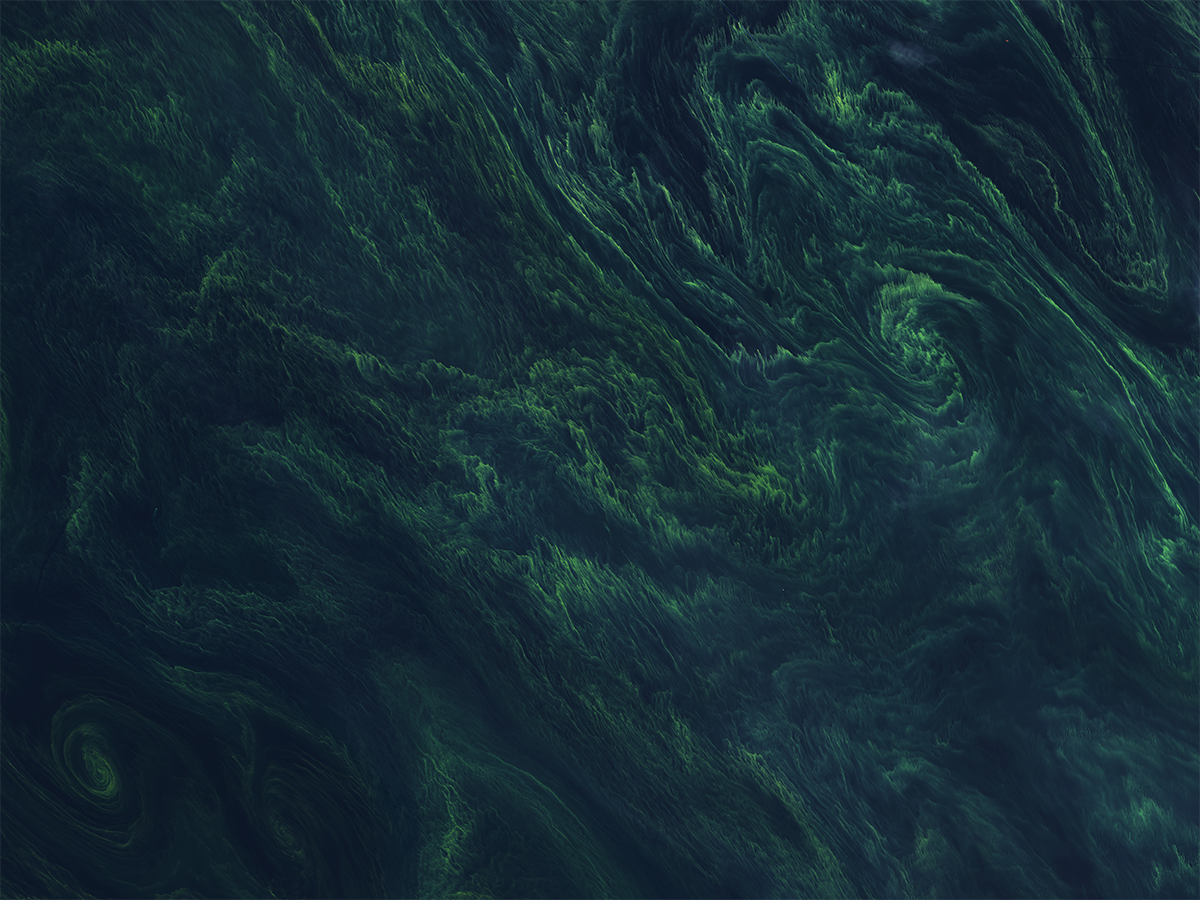
IMAGE ABOVE: A cyanobacteria bloom in the Baltic Sea reveals dynamic biological and physical activities such as stripes, swirls, and eddies. Photo Credit: OLI on the Landsat-8 satellite.
Once the conference concluded, Barnes worked with facilities manager Joe Donnelly to display the images in the Knight Oceanographic Research Center on campus.
Now, these images call CMS home and spark conversations about the fascinating ocean color science taking place at CMS.
